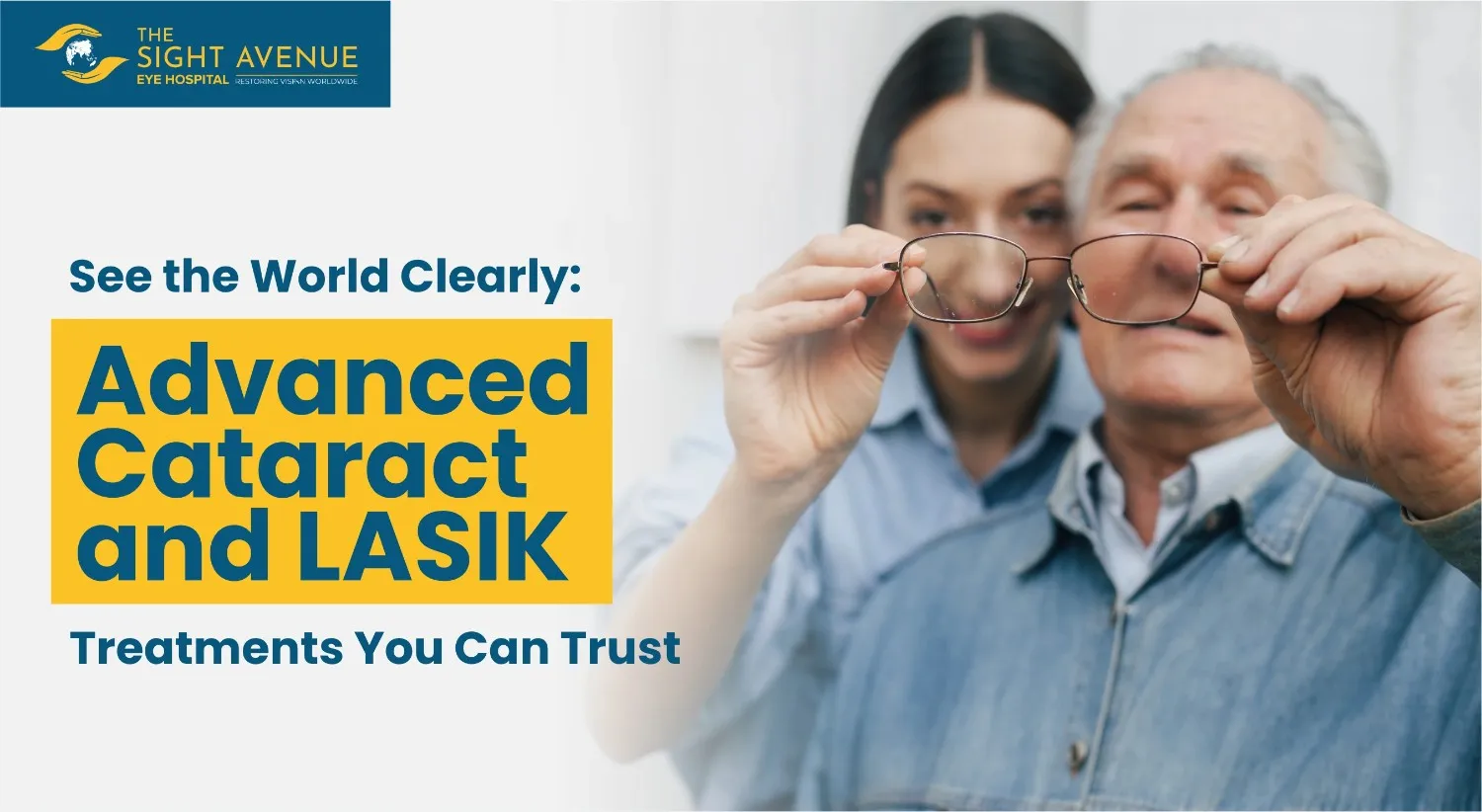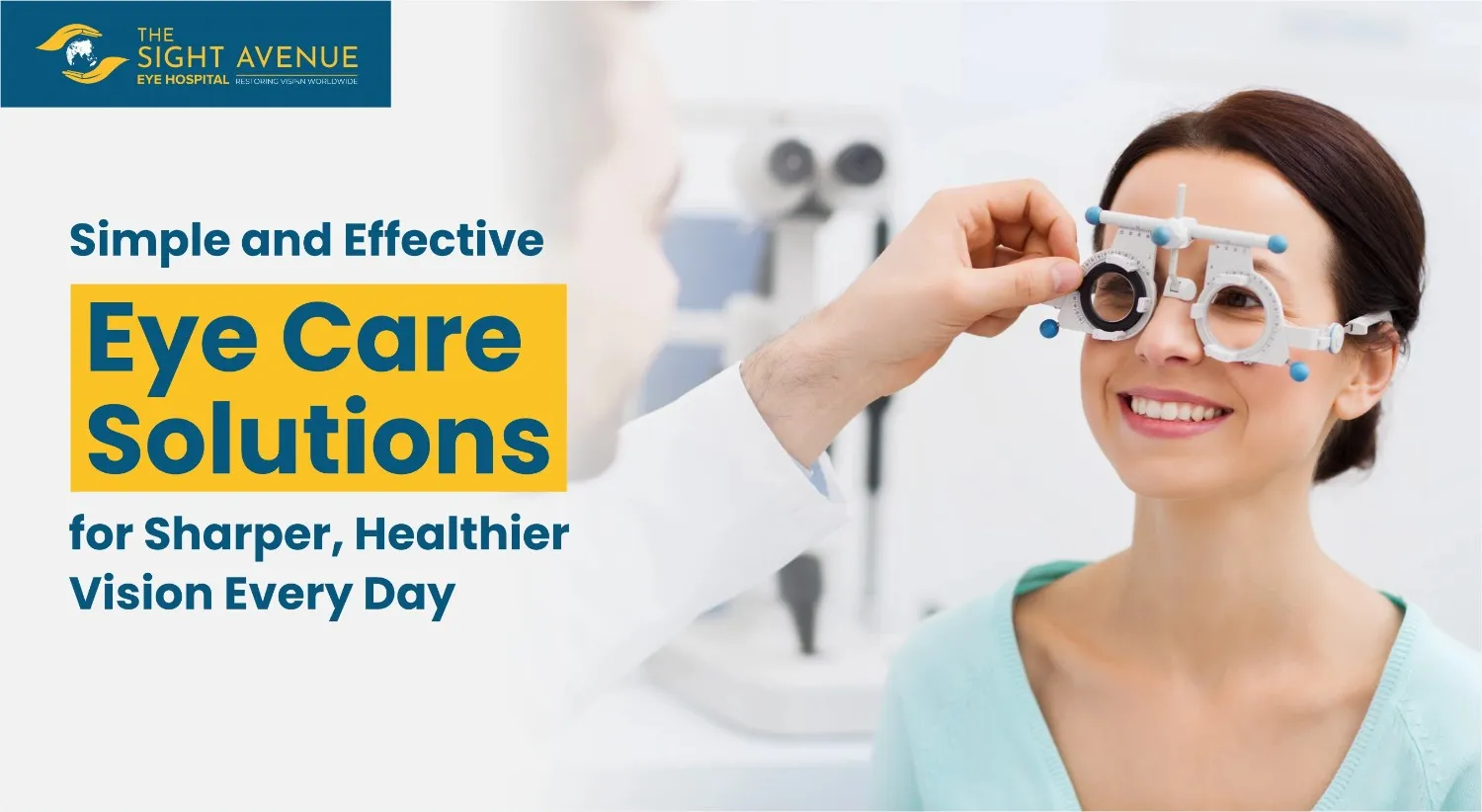High Eye Pressure – Causes, Symptoms & Treatments

Life has presented many challenges for humans, but there are still some problems humans create on their own. Yes, it’s true! Just because of our daily activities, sometimes we totally forget our health and this unawareness leads us to big problems. High eye pressure, or ocular hypertension, is one of the common problems created by so much focus on work without caring for eye health. If you are wondering what causes high eye pressure and how to reduce it, then don’t worry because this blog will help you solve your queries.
What is High Eye Pressure?
High eye pressure, clinically termed ocular hypertension, denotes a condition characterized by an elevation in intraocular pressure beyond the normal range. Typically, the standard eye pressure falls within the spectrum of 10 mm Hg to 21 mm Hg. If a patient's eye pressure exceeds this range, further diagnosis and high eye pressure treatment become imperative to prevent potential optic nerve damage and irreversible visual impairment.
Causes Of High Eye Pressure
Understanding the underlying triggers for heightened intraocular pressure is paramount to effective management. These points will help you understand what causes high eye pressure and how to reduce it. Some of the primary causes of high eye pressure include:
- Overproduction of Aqueous: An imbalance between the production and drainage of aqueous humor can lead to its accumulation within the eye, subsequently elevating intraocular pressure.
- Impaired Drainage Mechanism: When the drainage system fails to efficiently remove aqueous humor, it results in sluggish drainage, contributing to increased eye pressure.
- Eye Trauma: Injury or trauma to the eye can disrupt the delicate equilibrium between aqueous production and drainage, precipitating elevated eye pressure.
- Medications: Certain medications, particularly steroids and steroidal eye drops, have been implicated in causing ocular hypertension.
- Underlying Eye Conditions: Various ocular conditions, such as corneal arcus and pigment dispersion syndrome, are associated with heightened eye pressure.
Know More:- Silk Eye Surgery in India
Symptoms of High Eye Pressure
Recognizing the signs indicative of elevated intraocular pressure can facilitate prompt intervention. Common symptoms of high eye pressure encompass:
- Ocular Pain: Patients may experience discomfort within and around the eyes, often described as aching or throbbing sensations.
- Visual Disturbances: Blurred vision and blind spots in the visual field are hallmark symptoms of ocular hypertension.
- Redness: The eyes may appear red and inflamed, signaling heightened intraocular pressure
- Eye Irritation: Persistent irritation and discomfort in the eyes may ensue, prompting further evaluation.
- Headaches: Individuals afflicted with high eye pressure may frequently experience headaches, often localized around the temples or forehead.
If any person encounters any of these symptoms of high eye pressure, seeking prompt medical attention is imperative to facilitate timely diagnosis and management.
Know More: How To Remove Spectacles Permanently
High Eye Pressure Treatment
Addressing high eye pressure entails a multifaceted approach encompassing pharmacological interventions and surgical modalities:
- Medication: Ophthalmologists typically initiate high-eye pressure treatment with medicated eye drops aimed at reducing intraocular pressure. These eye drops function by enhancing aqueous drainage or curbing its production.
- Surgical Intervention: In cases where pharmacotherapy fails to adequately mitigate high eye pressure, surgical intervention may be warranted. Laser surgery represents a popular and minimally invasive option for addressing ocular hypertension. Through precise laser energy, the procedure targets and enhances aqueous outflow, consequently alleviating intraocular pressure.
When finding the answer to what causes high eye pressure and how to reduce it, then prompt identification and intervention are paramount in mitigating the deleterious effects of high eye pressure. By adopting a proactive stance towards eye health and adhering to recommended treatment modalities at the best eye hospital in Delhi, like The Sight Avenue Hospital, individuals can safeguard their vision and promote ocular well-being.
Conclusion
Heightened intraocular pressure warrants vigilant attention and comprehensive management strategies. By shedding light on what causes high eye pressure and how to reduce it, discourse efforts to empower individuals in their quest for optimal eye health and visual acuity. For further diagnosis and high eye pressure treatment, feel free to consult with experts at The Sight Avenue, renowned as the best eye hospital in Gurgaon, and overcome this severe disease before it’s too late.
Recent Blogs
Eye problems? Searching for an eye specialist near me in Delhi NCR? The Sight Avenue has 5 eye clinics in Delhi NCR. Contact us today!
Eye Hospital in Delhi
- The Sight Avenue
- The Sight Avenue
- The Sight Avenue
E-82-A, Ground Floor, Hansraj Gupta Rd, Greater Kailash I, New Delhi, Delhi 110048
Email:enquiry@thesightavenue.com
Tel : 011-4666 0666
Mob : +91-8883330799
Fortis Hospital, Escorts Okhla, New Delhi
Fortis Hospital, Vasant Kunj, New Delhi





